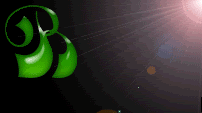Although various drugs cause hallucinations, some drugs are so notable for such an effect that they are classified as hallucinogens. Controversy exists about what a hallucination is. Is it a bluish tint to colors in a normal scene? Is it wavy motions in a solid and stationary object? Is it shapes in fireplace flames transforming into animal heads? Is it something that goes away if someone’s eyes open? Is it a creature that appears out of nowhere and provides mystical insights? Is it sensations of floating? Is it a different flow of time? Is it cross-wiring of senses, where colors are heard and smells are seen? Specialists may quibble, but this book classifies all such experiences as hallucinations.
Many people dislike hallucinatory experiences, especially people who like to be in control of themselves and of situations around them. Such people often find hallucinations not only unpleasant but downright frightening. Other people find the sensations intriguing and pleasurable.
Scientific interest in hallucinogens began to emerge in the 1800s, blossoming in the 1950s and 1960s. In those latter times hallucinogens were popularly identified with beatniks and hippies, and social disapproval of those lifestyles promoted legal restrictions on hallucinogens that terminated almost all scientific research regarding these substances. Thus much of the scientific data is old.
For information about specific hallucinogens, see alphabetical listings for: AET, amanita, belladonna, bufotenine, DET, DMT, DOB, DOM, dronabinol, ergot, ibogaine, jimson weed, LSD, marijuana, MDA, MDEA, MDMA, mescaline, morning glory, nutmeg, peyote, psilocybin, 2C-B, and yage.
skip to main |
skip to sidebar
.jpg)
Home I Adolescent & Diseases I Tips Blogging I Electronic I Property I SelebRItis & Sexy I Health I Music - Music I Gallery Photo I Games I Radio Blogger I Media Resep I Electronic I These Animals I About Chemistry I Design Tutorial I Batam Night I Correct Section I Maria Ozawa Friendster I Batam Media I Info Hotel Batam
Menu
- Clothing (7)
- Girls (1)
- Health (5)
- Hotel - Resort (1)
- Kutipan (9)
- Lain-lain (1)
- Narkoba (18)
- Pasar Latong (4)
- Treatment (1)
Blog Archive
About Me
.jpg)
- World Night
- This blog is created for those who want to know more Batam. We not only show the good side, but also bad.
---------------------------------------------------------























